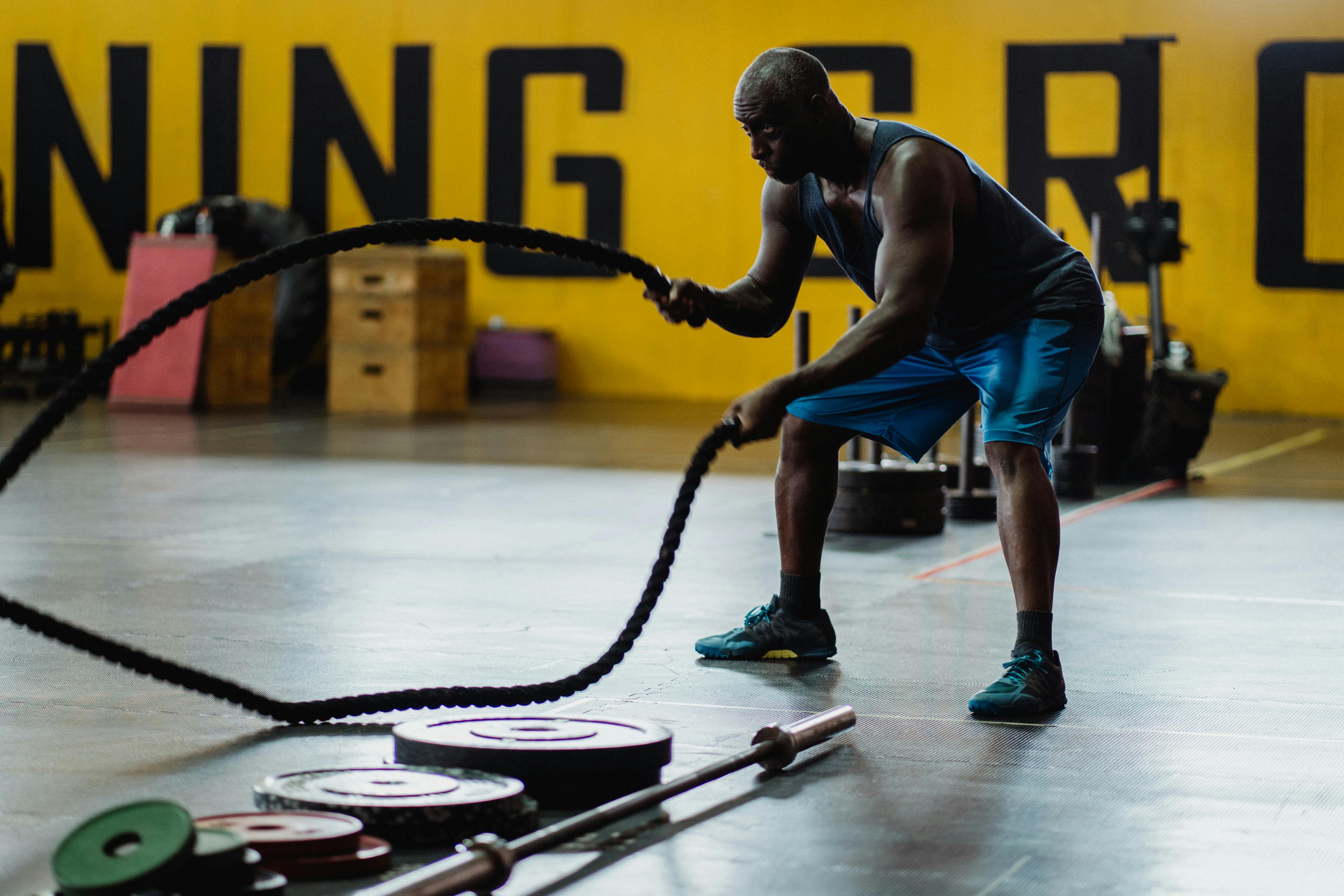Effective Push-Pull Training Plan for 2025: Discover Proven Techniques to Achieve Optimal Results
In the evolving world of fitness, crafting an effective Push-Pull Training plan has become vital for those seeking serious Krafttraining advancements. This technique incorporates alternating between exercises that target pushing motions (like bench presses) and pulling motions (like rows). This article will uncover the essentials of a strategic Push-Pull system that guarantees Muskelaufbau and maximized Kraftsteigerung while preventing injuries and ensuring proper recovery.

With an emphasis on carefully structured Trainingspläne, readers can dive into practical tips to help achieve their Fitnessziele. Expect to learn about Trainingsintensität, effective Trainingsvariationen, and how to appropriately schedule your workouts to enhance not only strength but overall fitness performance. Let’s embark on this journey to enhance your workout strategy for 2025.
Essential Components of a Push-Pull Training Plan
Building on the foundational knowledge of Push-Pull-Training, it’s important to understand its essential components. This format allows for structured Trainingsroutinen that can cater to a variety of Körpergruppen. Incorporating the right mixtures of Kraftgeräte, Langhantel, and Körgewicht exercises spells the difference between stagnation and progression.
Understanding Push and Pull Exercises
Push exercises focus on movements where muscles exert force to move an object away from the body. This includes workouts like bench presses and tricep extensions. Conversely, pull exercises (like deadlifts and pull-ups) involve muscles working to draw an object closer. By combining both types of exercises within your training sessions, you strike a balance that can lead to better Trainingsfortschritt.
Setting Clear Training Goals
Before commencing your training, having clear objectives is crucial. Distinguishing between Muskelaufbau, Kraftausdauer, and Fitnessverbesserung aims helps hone your Training method. For instance, if your primary goal is muscle hypertrophy, employing higher repetitions at moderate weights would be beneficial.
Risk of Injury and Recovery Techniques
In any Kraftsport regimen, understanding injury risks is paramount. Focusing on form, utilizing appropriate weights, and integrating recovery periods are key to avoiding Sportverletzungen. Techniques such as stretching, mobility work, and proper warm-up routines can significantly reduce risks associated with intense workouts. Incorporate these components in your overall training plan to ensure longevity.
Nutrition and Hydration for Optimal Performance
Nutrition plays an essential role in the effectiveness of any training plan. Consuming a well-balanced diet rich in proteins, carbohydrates, and healthy fats fuels workouts and aids recovery. Additionally, staying hydrated maintains optimal performance levels during your intense Workout-Strategien.
Tracking Progress and Making Adjustments
Keeping a detailed Trainingstagebuch aids in tracking your improvements, identifying trends, and discovering what techniques yield the best results. By assessing your performance, whether it’s through progressive overload or repetition ranges, you ensure the continued effectiveness of your workout strategy.
Structuring Your Weekly Training Routine
With these foundational components in place, designing a weekly training routine becomes crucial. The effectiveness of your Trainingsfrequenz directly correlates to the intensity and variety of exercises integrated into your program.
Example Push Day Structure
Your push day should include major movement exercises. Consider the following structure:
- Warm-Up: Dynamic stretches and light cardio for 10 minutes to prepare the muscles.
- Bench Press: 3 sets of 8-10 repetitions.
- Overhead Press: 3 sets of 8-10 repetitions.
- Incline Dumbbell Press: 4 sets of 8 repetitions.
- Tricep Dips: 3 sets to failure.
This design ensures a focus on major muscle groups while allowing for optimal recovery in between movements.
Example Pull Day Structure
Your pull day can be equally vital for strength building:
- Warm-Up: Similar dynamic stretches as on push day.
- Deadlifts: 3 sets of 6-8 repetitions.
- Pull-Ups: 3 sets to failure.
- Barbell Rows: 4 sets of 8 repetitions.
- Bicep Curls: 3 sets of 10 repetitions.
This approach emphasizes compound workouts while equally engaging minor muscle groups for balance.
Integration of Recovery Days
Recovery is as essential as the workout itself. Each week should entail recovery days to allow muscle regeneration. These days could incorporate light activities like yoga or initiate Cardiotraining to bolster heart health without straining muscle groups extensively.
Adjusting Training Frequency
Each individual may require varied training frequencies depending on goals and recovery time. Tailoring your Trainingsintensität and frequency will optimize overall fitness progress. Whether it’s two or four sessions, what’s integral is customizing the frequency to align with your recovery and fitness targets.

Progression Techniques for Enhanced Results
As steadily as you progress in your Push-Pull training, employing various techniques can enhance your outcomes significantly. Let’s explore several methods to intensify your approach.
Progressive Overload in Practice
Progressive overload—a fundamental principle in any Fitnessprogramm—involves increasing the demands placed on your body during training. This increment can occur through additional weights, higher repetitions, or even minimizing rest time between sets.
Circuit Training for Efficiency
This approach can amplify your workout efficiency by combining different exercises into a vigorous circuit format. Completing a cycle of push and pull exercises with minimal rest not only maintains a high heart rate but also burns more calories.
Advanced Intensification Techniques
Methods such as Supersets and Drop Sets can further challenge your muscles. Supersets involve performing two exercises back-to-back without rest, focusing on opposing muscle groups. Drop sets, on the other hand, entail reducing the weight after reaching failure to push through additional repetitions.
Training with a Partner or Coach
Incorporating a partner or personal trainer can significantly elevate your training. This factor not only supports motivation and accountability but also allows for expert feedback on form and technique, reducing risks of injuries.
Monitoring Results and Adjustments
Your Trainingstagebuch should not only track weight lifted but also record feelings of exhaustion or fatigue levels, allowing you to modify workouts as necessary. Documented insights pave the way for consistent advancements in strength and muscle definition.
Common Mistakes to Avoid in Push-Pull Training
It’s essential to recognize common pitfalls in the Push-Pull routine to navigate your training journey successfully.
Poor Warm-Up Routines
Neglecting a proper warm-up can be detrimental. Establishing a dynamic and thorough warm-up helps prepare the body for intense activity, reducing the likelihood of injuries.
Ignoring Recovery
Forgetting to prioritize recovery days can lead to overtraining, stalling your results. Make consistent and effective recovery techniques a priority in your weekly schedule.
Not Tracking Progress
A common mistake is failing to monitor training progress. Relying solely on memory can leave achievements overlooked. Maintaining a structured tracking method encourages accountability and allows for reflective adjustments based on performance.
Uniformity in Routine
Performing the same exercises can create a plateau in results. Ensuring a diverse Trainingsroutine allows for continuous adaptation and challenge, crucial for building muscle effectively.
Neglecting Nutrition
A fast-track approach often overlooks the importance of nutrition. A well-structured eating plan harmonizes with your Trainingsprogramm and plays a vital role in achieving fitness outcomes.
Conclusion: Tailoring Your Push-Pull Approach
Designing a personalized Push-Pull Training plan in 2025 opens doors to unparalleled fitness progress. Emphasizing principles of effective Krafttraining, recovery, and nutritional awareness will help navigate the complexities of your fitness journey. Using proven techniques, integrating adjustments, and leveraging scientific principles enable efficient training experiences no matter the fitness level.
Delve deeper into techniques and strategies to strengthen your training routine by exploring further topics on Fitness Goals and Essential Fitness Techniques.
With focused dedication, a structured plan, and expert guidance, achieving optimal results through Push-Pull training is within your grasp for 2025.
